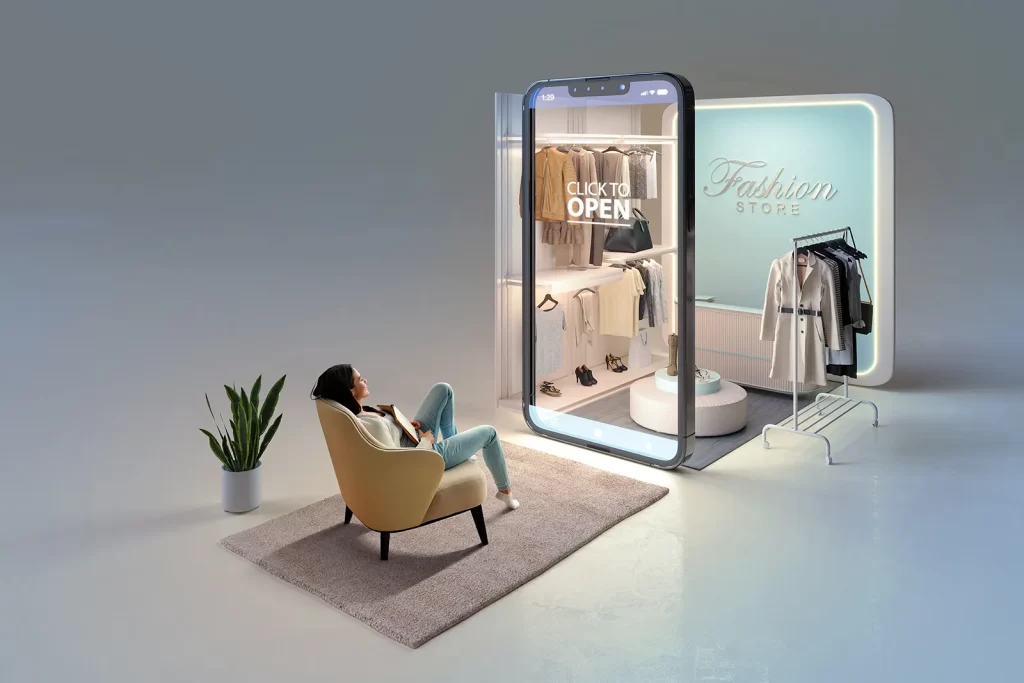Visual merchandising has emerged as a pivotal strategy to captivate online shoppers. It goes beyond merely presenting products. If you are new to this concept, it’s about curating an immersive, visually appealing experience.
Read on to learn the essence of visual merchandising in e-commerce and its importance for online retailers.
What’s in this article?
What is visual merchandising in e-commerce?
Visual merchandising in e-commerce refers to the strategic presentation and arrangement of products using visual elements such as images, videos, and design aesthetics. It’s a blend of art and science aimed at creating an enticing online shopping environment.
Unlike traditional retail, where physical displays and storefronts play a crucial role, e-commerce visual merchandising relies on digital mediums to influence consumer behavior.
For online retailers, the visual appeal of their digital storefront is often the first point of contact with potential customers. Visual merchandising enhances the overall shopping experience, making it more enjoyable and immersive.
Neglecting visual merchandising in e-commerce is akin to leaving potential revenue on the table. In the absence of a visually appealing and strategically arranged online store, businesses risk losing customers to competitors who invest in creating a compelling digital shopping environment. A lack of visual merchandising may result in a generic, uninspiring online presence that fails to engage and convert visitors.

A brief on where it started
The roots of visual merchandising trace back to traditional retail, where it was primarily about arranging physical products in an aesthetically pleasing way. In e-commerce, the evolution of visual merchandising has been driven by advancements in technology.
Early e-commerce websites simply displayed products with basic images, but with time, the focus shifted towards creating immersive, interactive experiences. Today, the integration of augmented reality (AR), virtual reality (VR), and artificial intelligence (AI) has ushered in a new era of dynamic and personalized visual merchandising.
Some key elements of visual merchandising include:
Product presentation and arrangement
The arrangement of products on an online store significantly influences user experience and purchasing decisions. Strategic categorization, upselling, and cross-selling opportunities guide users through a seamless journey, encouraging them to explore more and make informed choices.
Myntra and Nykaa excel in this aspect, strategically placing complementary products together to enhance the shopping experience.
Use of high-quality images and videos
In the absence of physical touch, high-quality images and videos serve as the surrogate for tangible experiences in e-commerce. Fashion giant, Ajio, for instance, employs high-resolution images and interactive videos to showcase their products from various angles, providing customers with a virtual feel of the items.
Consistent branding in the online store
Consistency in branding creates a cohesive and memorable shopping experience. Brands like Titan, with its online store Tanishq, maintain a consistent visual identity that extends from their physical stores to their digital presence. This consistency builds brand trust and recognition.
Also read: How do you keep your website design’s branding consistent?
Audience engagement and interactions
Visual merchandising isn’t just about displaying products; it’s about engaging the audience. E-commerce platform, Flipkart, incorporates user reviews, ratings, and customer-generated images alongside products. This user-generated content serves as a powerful form of social proof, influencing the purchasing decisions of potential buyers.
The importance of an appealing homepage
The homepage is the digital storefront’s equivalent of a physical store’s window display. The online grocery store, BigBasket, strategically organizes its homepage with visually appealing banners, highlighting ongoing promotions and showcasing fresh produce, creating an inviting entry point for customers.
Complex navigation can be a major deterrent for online shoppers. Fashion retailer, Limeroad, adopts an intuitive and user-friendly interface, allowing seamless navigation across categories and collections. The simplified layout ensures that customers can easily find what they’re looking for.
Effective product showcasing involves more than just displaying images. The reputed electronics giant, Croma, integrates detailed product descriptions, specifications, and customer reviews, providing shoppers with comprehensive information to make informed decisions. This transparency instills confidence in the buyer.
In other aspects, some brands like JioMart leverage chatbots to offer instant assistance to customers. These AI-driven assistants guide users through the shopping process, providing product recommendations and answering queries promptly.
E-commerce platforms like Amazon India and Flipkart use AI-driven algorithms to analyze customer behavior and preferences. These platforms provide personalized product recommendations, enhancing the overall shopping experience by presenting users with items that align with their interests.
Implementing effective visual merchandising strategies often translates into tangible benefits for e-commerce platforms. Snapdeal, a prominent Indian online marketplace, witnessed a 25% increase in conversion rates after revamping its visual merchandising techniques.
The enhanced user experience not only boosted sales but also contributed to a massive improvement in customer satisfaction. This was openly reflected in positive reviews and repeat business.
AI-driven visual merchandising
The future of visual merchandising is intertwined with artificial intelligence. AI algorithms will analyze user behavior, preferences, and even emotions to dynamically curate personalized product displays. Tomorrow’s e-commerce platforms are expected to leverage AI-driven visual merchandising to create tailored shopping experiences that anticipate and meet individual customer needs.
Consumers are increasingly seeking more immersive online shopping experiences. AR will play a significant role in this by allowing users to virtually try on products before making a purchase. Imagine an apparel brand using AR to let customers visualize how an outfit would look on them in real-time, revolutionizing the way we shop online.
The future of visual merchandising will see collaborations between various e-commerce platforms and influencers to create curated collections or even some exclusive product lines. Indian brands can harness the influence of local celebrities and social media influencers to boost their visual merchandising efforts.
Conclusion
Competition is fierce and consumer expectations are high. In such a case, visual merchandising stands as a tool to distinguish brands and elevate the online shopping experience.
Brands with a diverse audience profile now have a unique opportunity to leverage visual merchandising to not only meet but exceed customer expectations. By staying updated with the latest tools, technologies, and trends, brands can create visually stunning and highly engaging online storefronts.
These storefronts are all set to resonate with their target audience and create lasting impacts for the generations to come.




